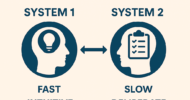Autism is a communication disorder where children have difficulty relating to other people. Pediatricians watch for speech delay as a sign of autism. Even before your child is expected to start talking, around a year old, you can watch for communication milestones. Problems attaining these milestones may indicate autism or other disorders such as hearing loss, vision loss, isolated language delay, or other developmental delays.
By six weeks of age, your baby should smile in response to your smile. This is not the phantom smile that you see as your baby is falling asleep or that gets attributed to gas. I mean, your baby should see you smile and smile back at your smile. Be aware that babies at this age will also smile at inanimate objects such as ceiling fans, and this is normal for young babies to do.
By 2 months of age, babies not only smile but also coo, meaning they produce vowel sounds such as “oooh” or “aaah” or “OH.” If your baby does not smile at you by their two month well baby check up visit or does not coo, discuss this delay with your child’s health care provider.
By four months of age, your baby should not only smile in response to you but also should be laughing or giggling out loud. Cooing also sounds more expressive (voice rises and falls or changes in pitch) as if your child is asking a question or exclaiming something.
Six-month-old babies make more noise, adding consonant sounds to say things like “da” and “ma” or “ba.” They are even more expressive and seek out interactions with their parents. Parents should feel as if they are having “conversations” with their babies at this age: baby makes noise, parents mimic back the sound that their child just made, then baby mimics back the sound, like a back and forth conversation.
All nine-month-olds should know their name. Meaning, parents should be convinced that their baby looks over at them in response to their name being called. Baby-babble at this age, while it may not include actual words yet, should sound very much like the language that they are exposed to primarily, with intonation (varying voice pitch) as well. Babies at this age should also do things to see “what happens.” For example, they drop food off their high chairs and watch it fall, they bang toys together, shake toys, taste them, etc.
Babies at this age look toward their parents in new situations to see if things are ok. When I examine a nine month old in my office, I watch as the baby seeks out his parent as if to say, “Is it okay that this woman I don’t remember is touching me?” They follow as parents walk away from them, and they are delighted to be reunited. Peek-a-boo elicits loud laughter at this age. Be aware that at this age babies do flap their arms when excited or bang their heads with their hands or against the side of the crib when tired or upset; these “autistic-like” behaviors are in fact normal at this age.
By one year of age, children should be pointing at things that interest them. This very important social milestone shows that a child understands an abstract concept (I look beyond my finger to the object farther away) and also that the child is seeking social interaction (“Look at what I see/want, Mom!”). Many children will have at least one word that they use reliably at this age or will be able to answer questions such as “what does the dog say?” (child makes a dog sound).
Even if they have no clear words, by their first birthday children should be vocalizing that they want something. Picture a child pointing to his cup that is on the kitchen counter and saying “AAH AAH!” and the parent correctly interpreting that her child wants his cup. Kids at this age also will find something, hold it up to show a parent or even give it to the parent, then take it back. Again, this demonstrates that a child is seeking out social interactions, a desire that autistic children do not demonstrate. It is also normal that at this age children have temper tantrums in response to seemingly small triggers such as being told “no.” Unlike in school-age children, difficulties with “anger management” are normal at age one year.
As an informal screen for autism, children below one year of age should be monitored for signs of delayed or abnormal development of social and communication skills. Home videos of children diagnosed with autism reveal that even before their first birthdays, many autistic children demonstrate abnormal social development that went unrecognized.
Naline Lai and Julie Kardos are pediatricians who blog at 2 Peds in a Pod.























![Antimicrobial resistance: a public health crisis that needs your voice [PODCAST]](https://kevinmd.com/wp-content/uploads/Design-1-190x100.jpg)
![Rethinking medical education for a technology-driven era in health care [PODCAST]](https://kevinmd.com/wp-content/uploads/The-Podcast-by-KevinMD-WideScreen-3000-px-4-190x100.jpg)
